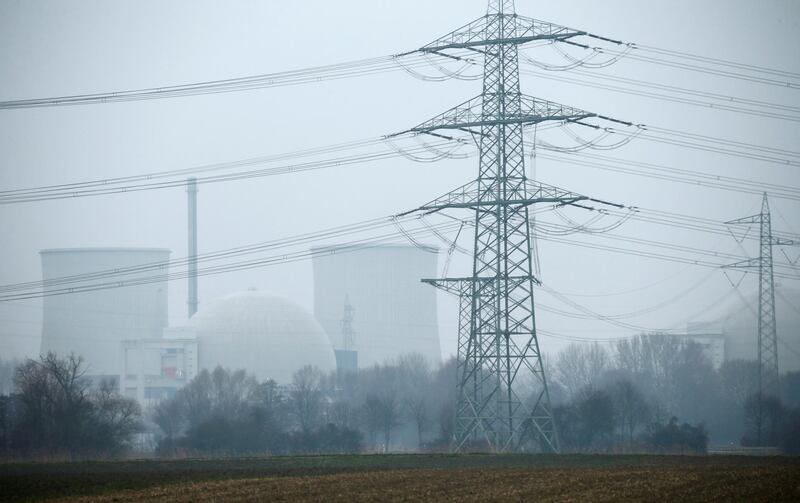Is energy, of all top global issues, the most prone to myths and misconceptions? It is a complex, technical, politicised area that deals in decades of asset lives and trillions of dollars and is deeply entwined with climate change.
Yet, too often, media, analysts and politicians discuss it with cliches, defunct talking points and ideological tenets.
One myth, the idea that oil production would imminently peak and decline because of dwindling resources, was popular in the 1970s and during the China-fuelled price boom of the 2000s.
Fortunately, the advent of US shale production and, more recently, the progress in competing non-oil systems has largely killed off this idea.
Now the industry worries instead about “peak demand”, a much more realistic concept that bets on technological ingenuity instead of against it.
However, other flawed ideas recur across all energy types. One overarching failing is the search for a silver bullet that solves all energy and climate problems: nuclear, solar and wind, geothermal, self-driving electric vehicles, radically improved efficiency, the reversal of economic and population growth, an expansion into space or any of a host of other panaceas.
In reality, all energy sources have flaws, negative consequences, no-go areas and natural limits of some kind. As we try ever harder to shoehorn a single solution into unsuitable problems, costs rise and reliability drops in most cases.
The enormous size and inertia of the energy system, its geographic spread and the varied demands on it mean that making it clean and available to all humanity by midcentury, while staying cheap and trustworthy, is tough even if we use all available tools sensibly – and impossible if we limit our options.
Let us take some illustrations. Carbon capture and storage, or CCS – which is taking carbon dioxide from industries and power plants, and disposing of it safely underground – is assessed by most major agencies as an essential part of tackling climate change. Yet, news stories seem obliged always to describe it as “unproved”, “expensive” or “commercially unviable.”
This “unproved” technology started in 1972 in the US, and Norway began using it for environmental reasons in 1996, at the Sleipner field, where it has progressed successfully and without problems.
Hiccups such as those at the Gorgon field in Australia, where capture levels have so far been lower than planned, are described as existential doom for CCS, rather than the natural teething troubles of new projects.
"CCS is expensive" – compared to what? The costs of $50 to $100 per tonne of carbon dioxide captured are favourable alongside subsidies for the early solar industry or for electric car purchases today. And the technology has been “commercially unviable” because no one was willing to pay for it – until recently.
Now that European carbon prices have risen well above $50 a tonne and generous American tax credits have become available, a wave of CCS projects is appearing.
Renewables are often dismissed by quite a different tendency – those who dismiss the threat of climate change.
We will inevitably be told that the “wind doesn’t always blow and the sun doesn’t always shine”, as though this were some remarkable revelation that was overlooked. We do not have to be Einstein, who won the Nobel for discovering the photoelectric effect in 1905, to be familiar with sunrise.
Every power cut in Texas, California or the North Sea is blamed on unreliable solar or wind, even though conventional power plants, the grid or the power market design often prove to be at least equally at fault.
In reality, the costs of renewables have fallen impressively and combinations of batteries, other storage systems and smarter grids mean we should be able to meet 80 per cent of electricity demand with renewables at similar or lower costs to today, with high reliability.
Nuclear power suffers from some of its overenthusiastic advocates almost as much as from its detractors. As a large, proven, reliable and low-carbon energy source, it should have a major role. Many anti-nuclear activists are still fighting the battles of the 1970s that helped birth the modern green movement before climate change became the overriding threat.
Such thinking yields the absurd result of hyper-environmentally conscious Germany phasing out its safe, existing nuclear power by the end of next year while clinging on to coal-fired stations until 2038. At the same time, CCS to clean up these polluting monsters is next to impossible in Germany, even while its British, Dutch and Norwegian neighbours enthusiastically pursue it.
On the other hand, nuclear fans who tout it as the only or the major future energy source need to reckon honestly with a recent history in Europe and the US of massive cost overruns and delays concerning new plants.
This is partly the result of public opposition and over-engineered and ever-changing safety standards. It also comes from a nuclear industry and, more generally, western economies, which seem to have forgotten how to build anything large – whether a French reactor, an airport in Berlin or a tunnel in Boston.
Finally, a persistent meme, fuelled by dodgy calculations, purports to show that electric vehicles emit more carbon dioxide than petrol or diesel cars. This relies on the idea that making batteries in China is very polluting and that vehicles would be powered by coal-fired electricity. In almost all cases, electric cars cut pollution by 30 per cent to 70 per cent and this will only get better as they improve and as the electric grid becomes cleaner.
Why do such obsessions surface and recur? Some fit the zeitgeist or the needs of environmentalists or energy industry lobbyists.
Sometimes technology and circumstances have changed but zombie ideas stagger on. Sometimes hard truths are unpalatable and counterintuitive while simple but false solutions to complex problems are appealing.
Whatever the reasons, we should all avoid such energy myths ourselves and be vigilant in detecting them in others.
Robin Mills is chief executive of Qamar Energy and author of The Myth of the Oil Crisis






